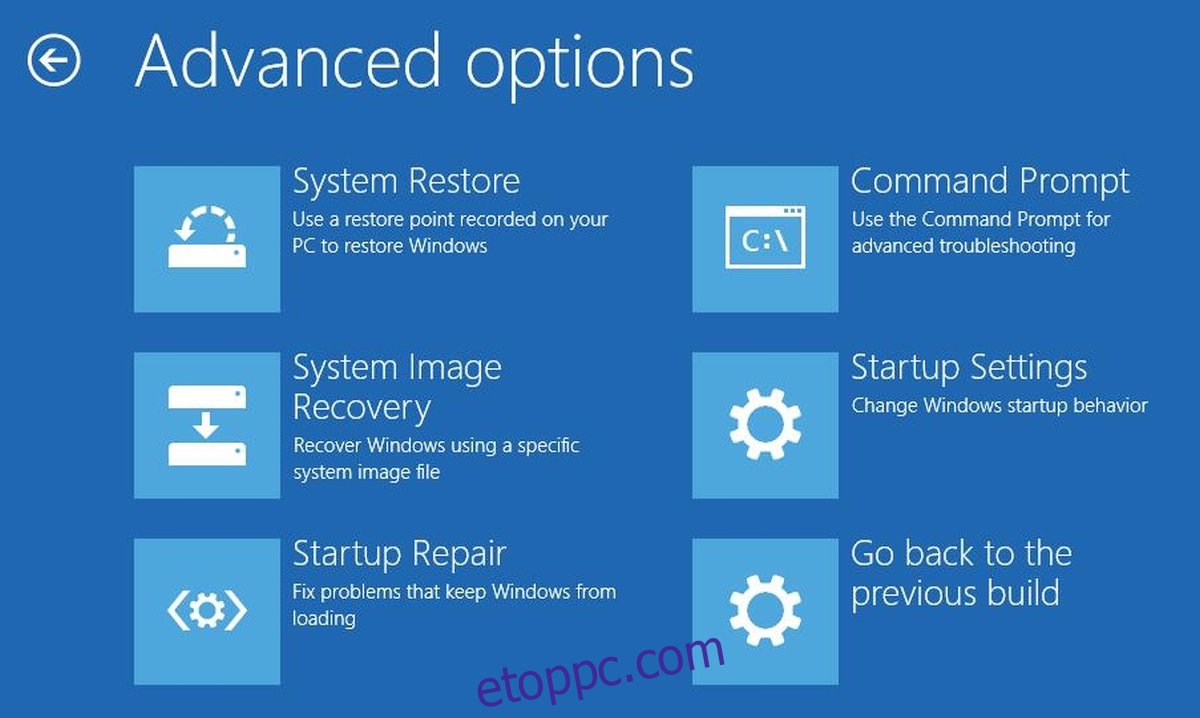In 1993, Microsoft released Windows NT 3.1, the first version of the newly developed Windows NT operating system. Unlike the Windows 9x series of operating systems, it is a fully 32-bit operating system. NT 3.1 introduced NTFS, a file system designed to replace the older File Allocation Table which was used by DOS and the DOS-based Windows operating systems. In 1996, Windows NT 4.0 was released, which includes a fully 32-bit version of Windows Explorer written specifically for it, making the operating system work like Windows 95. Windows Vista focused on securing the Windows operating system against computer viruses and other malicious software by introducing features such as User Account Control.
New features include Windows Aero, updated versions of the standard games (e.g. Solitaire), Windows Movie Maker, and Windows Mail to replace Outlook Express. Despite this, Windows Vista was critically panned for its poor performance on older hardware and its at-the-time high system requirements. Windows 7 followed two and a half years later, and despite it technically having higher system requirements, reviewers noted that it ran better than Windows Vista. Windows 8.1, a free upgrade to Windows 8, was released in 2013. On October 26, 2012, Microsoft released Windows 8 to the public. One edition, Windows RT, runs on some system-on-a-chip devices with mobile 32-bit ARM processors.
How Old Is Windows 11 Windows 8 features a redesigned user interface, designed to make it easier for touchscreen users to use Windows. The interface introduced an updated Start menu known as the Start screen, and a new full-screen application platform. The desktop interface is also present for running windowed applications, although Windows RT will not run any desktop applications not included in the system. On the Building Windows 8 blog, it was announced that a computer running Windows 8 can boot up much faster than Windows 7. New features also include USB 3.0 support, the Windows Store, the ability to run from USB drives with Windows To Go, and others.
Windows 8 was given the kernel number NT 6.2, with its successor 8.1 receiving the kernel number 6.3. So far, neither has had any service packs yet, although many consider Windows 8.1 to be a service pack for Windows 8. The first versions of Windows (1.0 through to 3.11) were graphical shells that ran from MS-DOS. Windows 95, though still being based on MS-DOS, was its own operating system, using a 16-bit DOS-based kernel and a 32-bit user space.
Windows 95 introduced many features that have been part of the product ever since, including the Start menu, the taskbar, and Windows Explorer . In 1997, Microsoft released Internet Explorer 4 which included the Windows Desktop Update. In 1998, Microsoft released Windows 98, which also included the Windows Desktop Update and Internet Explorer 4 by default. The inclusion of Internet Explorer 4 and the Desktop Update led to an anti-trust case in the United States. Windows 98 included USB support out of the box, and also plug and play, which allows devices to work when plugged in without requiring a system reboot or manual configuration. Windows Me, the last DOS-based version of Windows, was aimed at consumers and released in 2000.
It introduced System Restore, Help and Support Center, updated versions of the Disk Defragmenter and other system tools. Microsoft released Windows 2000 on February 17, 2000 as the successor to Windows NT 4.0, 17 months after the release of Windows 98. It was successfully deployed both on the server and the workstation markets. Terminal Services, previously only available as a separate edition of NT 4, was expanded to all server versions. Windows 2000 is also the last NT-kernel Windows operating system to lack product activation.
Like a few previous iterations of Windows, Windows 10 still has both the 'run as administrator' and 'troubleshoot compatibility' options. If you right click on the game icon, there is an option at the bottom called Properties. If you click on that, a pop-up box will appear with a few tabs. Navigate to the Compatibility tab and check the compatibility mode box to un-gray the dropdown menu beneath and choose what previous version of windows you want to run your game in.
Although Microsoft officially recommends buying a new PC rather than trying to upgrade one running Windows 7 to Windows 10, the newer operating system will usually run reasonably well on these old computers. On the PC you're trying to upgrade, download and run Microsoft's Windows 10 Media Creation Tool, choose the Upgrade this PC now option, and wait for Windows 10 to download. Computers running Windows 8 or Windows 10—that is, most laptops sold between late 2013 and now—are fairly easy to get up and running if they have no major hardware problems. Microsoft still supports both operating systems with security updates, and apps and Web browsers like Chrome will run on either without complaint. Windows 8 was faster than previous versions of Windows and included support for the new, much faster USB 3.0 devices.
The Windows Store, which offers universal Windows apps that run in a full-screen mode only, was introduced. Programs could still be installed from third-parties like other iterations of Windows, but they could only access the traditional desktop interface of Windows. Before you can start, you are going to need the installation media and this is where licensing gets a little tricky. I already had ISO files of Windows NT4 and Windows 2000 but getting hold of Window NT3.51 took a bit more searching.
One site I found is winworldpc.com which has install media for a range of old OS, from Windows 1.x up to Windows 2000. You can even try beta versions of Windows and some more obscure operating systems. Later versions of Windows require a product key, which I already had. Downloads from winworldpc.com come in the 7zip format so you are going to need tool that can unpack 7zip files. The virtual floppy drive files are .IMG file type, to use them with Hyper-V you will need to rename them to .VFD files. Along with a redesigned look and feel to the user interface, the new operating system was built on the Windows 2000 kernel, giving the user a more stable and reliable environment than previous versions of Windows.
Microsoft focused on mobility for both editions and including plug-and-play features for connecting to wireless networks. The operating system also utilized the 802.11x wireless security standard. Windows XP went on to become one of Microsoft's best-selling products. Windows 11 is the next generation release of Windows NT, and the successor to Windows 10. Codenamed "Sun Valley," it was unveiled on June 24, 2021, and was released on October 5, 2021.
It will be distributed for free to all Windows 10 users with compatible PCs via a Windows Update. Microsoft's PC Health Check App lets you check compatibility for your PC. According to Microsoft, Windows 11 will be released for newer PCs first and then the initial release will continue till mid 2022.
Windows 11 revamps the GUI and brings modern code, thus making it much faster than Windows 10. It is also noted that Windows 11 updates are significantly compressed, so the updates are downloaded faster. Also, Windows 11 does not show signs of the 'Installing Updates' screen while installing updates during 'Update and Restart' phase, thus finishing updates within 5 minutes. Windows last a long time, but eventually they need to be replaced.
From the inside of the house, if you notice beads of water between the panes of glass—called the glazing—the weathertight seal has failed. That allows the insulating gas to leak out and condensate seeps in. You might be able to forgive the way it looks, but a window with a busted seal is much less energy efficient. If the window is hard to open—the pulleys don't work, there are too many layers of paint sealing it shut, it slams closed by itself—a newer version will be easier to operate.
From the outside, if you notice substantial rot beyond the point of a spot repair, a replacement is in order. I'm still angry that Windows 10 rebooted in the middle of a three-day GPU upscale test last week, requiring me to restart the nearly complete run from scratch. Most of my interaction with Windows 10 is professional, but reviewers are really weird customers for an operating system, because most OS's aren't built around the idea that they're under review. Restarting previous desktop applications after reboot is great for regular users but sucks for people who were trying to achieve a pristine environment for further testing. I spend a lot more time fighting with Windows 10 on an ongoing basis, but that's not really a fair assumption to make about everybody else.
Windows 8 replaced the more traditional Microsoft Windows OS look and feel with a new "Metro" design system interface that first debuted in the Windows Phone 7 mobile operating system. The Metro user interface primarily consisted of a "Start screen" made up of "Live Tiles," which linked to applications and features that were dynamic and updated in real time. Windows 7 was released in conjunction with Windows Server 2008 R2, Windows 7's server counterpart. In July 2006, Microsoft released a thin-client version of Windows XP Service Pack 2, called Windows Fundamentals for Legacy PCs . The aim of WinFLP is to give companies a viable upgrade option for older PCs that are running Windows 95, 98, and Me that will be supported with patches and updates for the next several years. Most user applications will typically be run on a remote machine using Terminal Services or Citrix.
On September 14, 2000, Microsoft released a successor to Windows 98 called Windows Me, short for "Millennium Edition". It was the last DOS-based operating system from Microsoft. System Restore was a notable feature that would continue to thrive in all later versions of Windows.
Every time you switch to a new version of Windows – be it one of Windows 10's feature updates or a whole new OS – Microsoft keeps a record of the previous version. This includes data on all your installed programs and settings, stored within a folder known simply as 'Windows.old'. Windows 2.0 continued 16-bit computing with VGA graphics and early versions of Word and Excel.
It allowed apps to sit on top of each other, and desktop icons made Windows feel easier to use at the time of the 2.0 release in December, 1987. Microsoft went on to release Windows 2.1 six months later, and it was the first version of Windows to require a hard disk drive. Back in 1985, Windows 1.0 required two floppy disks, 256 kilobytes of memory, and a graphics card.
If you wanted to run multiple programs, then you needed a PC with a hard disk and 512 kilobytes of memory. You wouldn't be able to run anything with just 256 kilobytes of memory with modern machines, but those basic specifications were just the beginning. While Apple had been ahead in producing mouse-driven GUIs at the time, it remained focused on the combination of hardware and software. Microsoft had already created its low-cost PC DOS operating system for IBM PCs, and was firmly positioned as a software company. In many cases, Windows Vista was noticeably more responsive than Windows XP on identical hardware. Windows Vista simplified and centralized desktop configuration management, which reduced the cost of keeping systems updated.
Windows provides a graphical user interface , virtual memory management, multitasking, and support for many peripheral devices. In addition to Windows operating systems for personal computers, Microsoft also offers operating systems for servers and mobile devices. On October 6, 2018, distribution of Windows version was paused while Microsoft investigated an issue with user data being deleted during an in-place upgrade.
It affected systems where a user profile folder (e.g. Documents, Music or Pictures) had been moved to another location, but data was left in the original location. As Windows Server 2019 is based on the Windows version 1809 codebase, it too was removed from distribution at the time, but was re-released on November 13, 2018. The software product life cycle for Server 2019 was reset in accordance with the new release date. Windows 10 is the current release of the Microsoft Windows operating system.
Unveiled on September 30, 2014, it was released on July 29, 2015. It was distributed without charge to Windows 7 and 8.1 users for one year after release. On June 25, 1998, Microsoft released Windows 98 (code-named Memphis), three years after the release of Windows 95, two years after the release of Windows NT 4.0, and 21 months before the release of Windows 2000. It included new hardware drivers and the FAT32 file system which supports disk partitions that are larger than 2 GB . USB support in Windows 98 is marketed as a vast improvement over Windows 95. The release continued the controversial inclusion of the Internet Explorer browser with the operating system that started with Windows 95 OEM Service Release 1.
After Windows 3.11, Microsoft began to develop a new consumer-oriented version of the operating system codenamed Chicago. Chicago was designed to have support for 32-bit preemptive multitasking like OS/2 and Windows NT, although a 16-bit kernel would remain for the sake of backward compatibility. The Win32 API first introduced with Windows NT was adopted as the standard 32-bit programming interface, with Win16 compatibility being preserved through a technique known as "thunking". A new object-oriented GUI was not originally planned as part of the release, although elements of the Cairo user interface were borrowed and added as other aspects of the release slipped.
As released, Windows NT 3.x went through three versions (3.1, 3.5, and 3.51), changes were primarily internal and reflected back end changes. Support for Windows NT 3.51 ended in 2001 and 2002 for the Workstation and Server editions, respectively. Also, make sure all of your necessary files from Windows 10 are backed up before starting this process. Just like when you upgraded windows 7 or Windows 8.1 to 10, all of your files should come with you. This practice also applies to your iPhone or iPad, Android device, Windows Phone, or whatever mobile device you have.
Windows need to be pretty bad in order to justify a full replacement. If they were single pane we would probably agree, but double pane windows mean they are at least fairly modern, so repairing them could be a lot more affordable. The seals around the thermal units of the window (that's the glass part) will degrade over time so it is possible that they are leaking a bit of air.
You may be able to take care of that with a tube of caulking. Real Chromebooks have several benefits over CloudReady laptops, including better security protections for locally stored data and better hardware support . But kids who use Chromebooks at school will recognize the interface and all the apps, so they won't need to relearn anything to get going. And the operating system is quick and simple to update—you'll never be waiting an hour or more for a big, multi-reboot update to install. Well, it introduced the start menu we still have today, for one thing. Windows 95 was a big change for operating systems - it was the first to deliver a more user-friendly interface that was more intuitive for the average user.
I don't trust it not to replace driver versions I've installed with driver versions it likes better. I don't trust it not to change my user preferences or my defaults. I don't trust it to make the right decision about which software I am and am not allowed to run. This folder is created when you upgrade from one version of Windows to another, starting with Windows Vista.
The Windows.old folder contains all the files and data from your previous Windows installation. You can use it to restore your system to the old version of Windows if you don't like the new version. If you're looking for a specific file that wasn't properly copied to your new Windows installation, you also could dig into the Windows.old folder and find it.
Though Microsoft claimed Windows 10 would be the last version of Windows ever, Windows 11 came with a new visual design, updated apps, touchscreen optimizations, and multitasking features. Microsoft also claims Windows 11 is the most secure release yet. Existing Windows 10 users will be able to upgrade to Windows 11 for free as long as their PC meets the system requirements.
























No comments:
Post a Comment
Note: Only a member of this blog may post a comment.